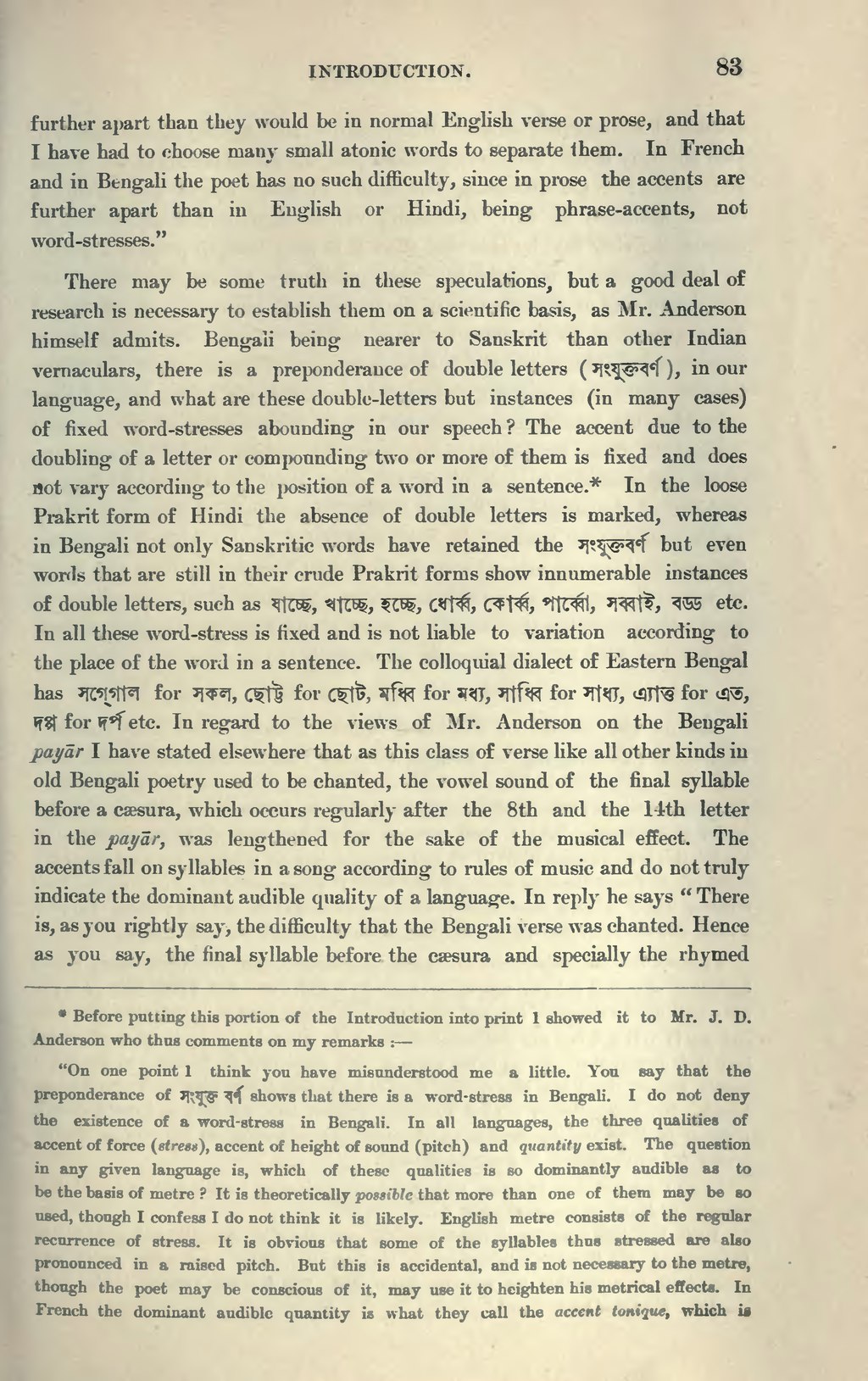INTRODUCTION. 83 further apart than they would be in normal English verse or prose, and that I have had to choose many small atonic words to separate them. In French and in Bengali the poet has no such difficulty, since in prose the accents are further apart than in English or Hindi, being phrase-accents, not word-stresses.” There may be some truth in these speculations, but a good deal of research is necessary to establish them on a scientific basis, as Mr. Anderson himself admits. Bengali being nearer to Sanskrit than other Indian vernaculars, there is a preponderance of double letters (os), in our language, and what are these double-letters but instances (in many cases) of fixed word-stresses abounding in our speech? The accent due to the doubling of a letter or compounding two or more of them is fixed and does not vary according to the position of a word in a sentence.” In the loose Prakrit form of Hindi the absence of double letters is marked, whereas in Bengali not only Sanskritic words have retained the of but even words that are still in their crude Prakrit forms show innumerable instances of double letters, such as asso, 4to, &Co., cosé, Cotá, *istol, oft, où etc. In all these word-stress is fixed and is not liable to variation according to the place of the word in a sentence. The colloquial dialect of Eastern Bengal has সগ্রেগাল for সকল, ছোট্ট for ছোট, মধিব for মধ্য, সাধিব for সাধ্য, এ্যাক্ত for এত, 73 for of ete. In regard to the views of Mr. Anderson on the Bengali payār I have stated elsewhere that as this class of verse like all other kinds in old Bengali poetry used to be chanted, the vowel sound of the final syllable before a caesura, which occurs regularly after the 8th and the 14th letter in the payār, was lengthened for the sake of the musical effect. The accents fall on syllables in a song according to rules of music and do not truly indicate the dominant audible quality of a language. In reply he says “There is, as you rightly say, the difficulty that the Bengali verse was chanted. Hence as you say, the final syllable before the caesura and specially the rhymed
- Before putting this portion of the Introduction into print 1 showed it to Mr. J. D. Anderson who thus comments on my remarks:
“On one point 1 think you have misunderstood me a little. You say that the preponderance of Ross of shows that there is a word-stress in Bengali. I do not deny the existence of a word-stress in Bengali. In all languages, the three qualities of accent of force (stress), accent of height of sound (pitch) and quantity exist. The question in any given language is, which of these qualities is so dominantly audible as to be the basis of metre 2. It is theoretically possible that more than one of them may be so used, though I confess I do not think it is likely. English metre consists of the regular recurrence of stress. It is obvious that some of the syllables thus stressed are also pronounced in a raised pitch. But this is accidental, and is not necessary to the metre, *gh the poet may be conscious of it, may use it to heighten his metrical effects. In French the dominant audible quantity is what they call the accent tonique, which is
